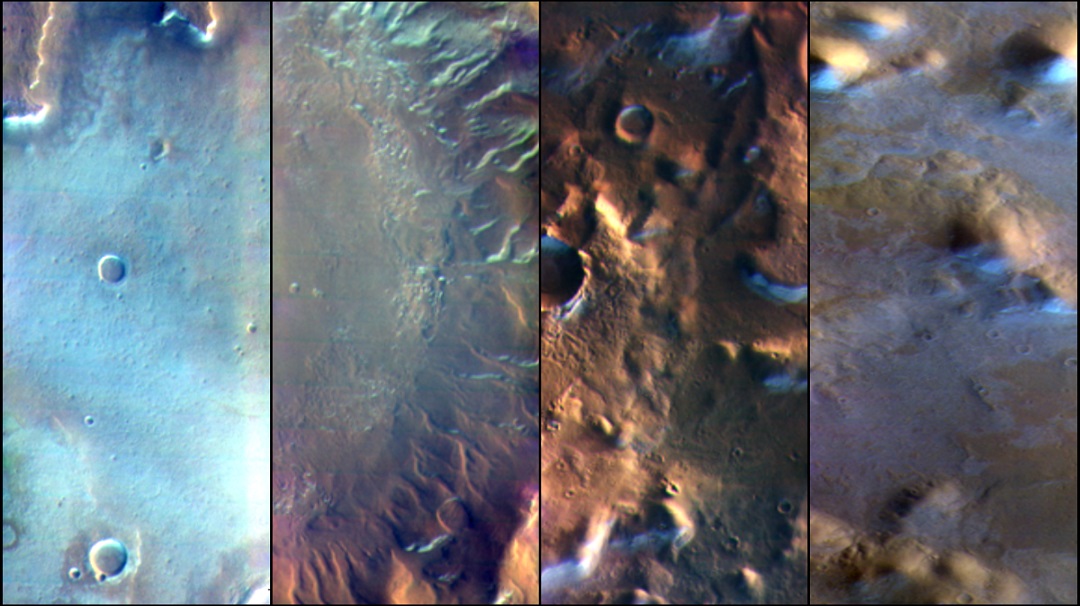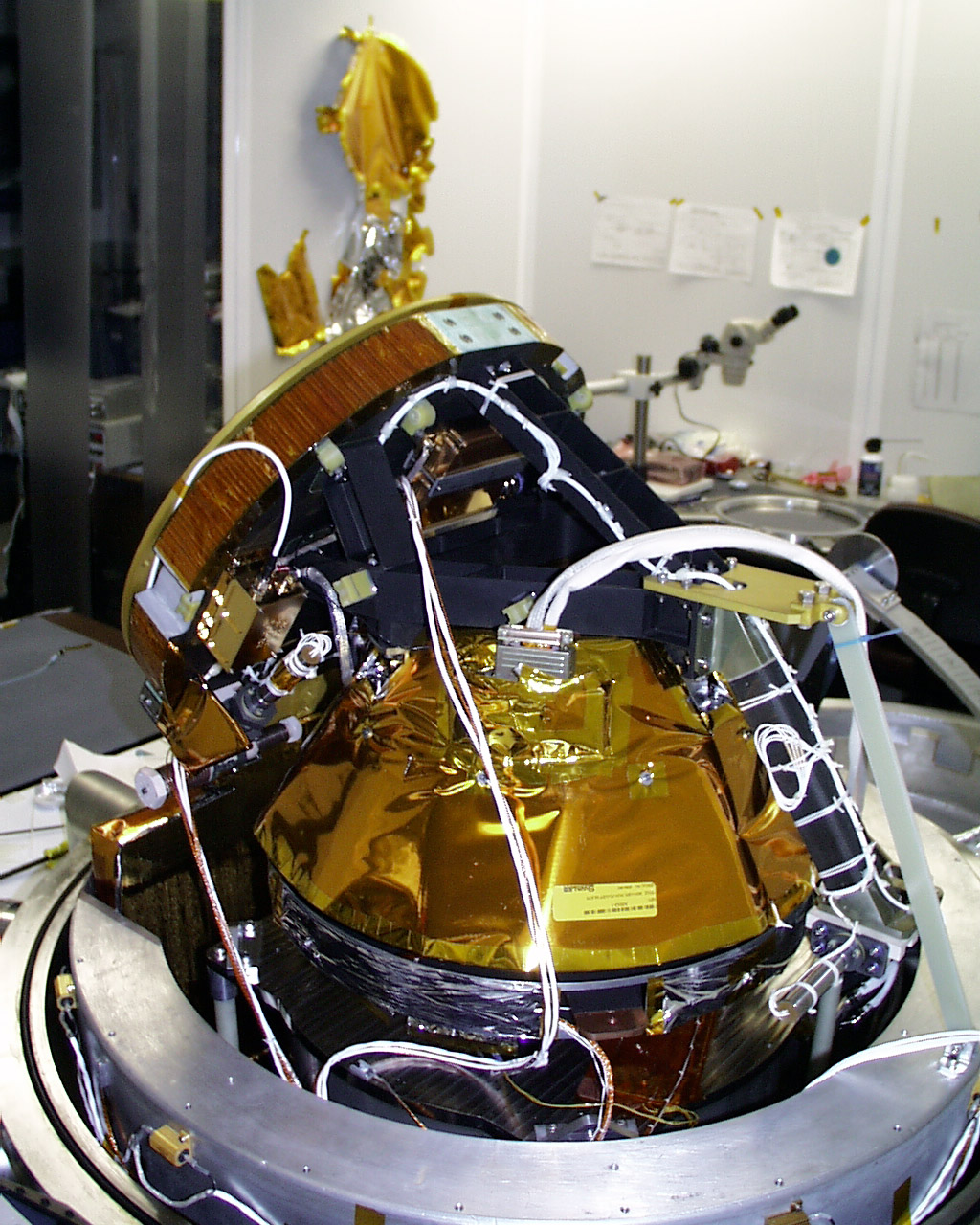Mars Odyssey
Science
Mars Odyssey is the longest continually active mission in orbit around a planet beyond Earth.
Overview
2001 Mars Odyssey has contributed numerous science results supporting the Mars Exploration Program’s overall strategy of “Following the Water.” It has mapped the amount and distribution of chemical elements and minerals on the Martian surface. Maps of hydrogen distribution led scientists to discover vast amounts of water ice in the polar regions buried just beneath the surface. Odyssey has also recorded the radiation environment in low Mars orbit to determine the risk to any future human explorers who may go to Mars.

Objectives
To contribute to the four Mars Exploration Program science goals, Mars Odyssey has the following science objectives:
- Globally map the elemental composition of the surface
- Determine the abundance of hydrogen in the shallow subsurface
- Acquire high spatial and spectral resolution images of the surface mineralogy
- Provide information on the morphology of the Martian surface
- Characterize the Martian near-space radiation environment as related to radiation-induced risk to human explorers
Science Highlights
NASA's Mars Odyssey spacecraft has beamed back more than a million images, gathered during 23 years in orbit around the Red Planet. That wealth of data has yielded an abundance of significant scientific knowledge about water ice on Mars, the composition and physical properties of the planet's surface, and Mars' two moons.
Learn More About Odyssey's Science Highlights about Science Highlights
Science Instruments
The Mars Odyssey Orbiter spacecraft carries three science tools for acquiring information about Martian geology, atmosphere, environmental conditions, and potential biosignatures.
Learn More About Odyssey's Science Instruments about Science Instruments
































